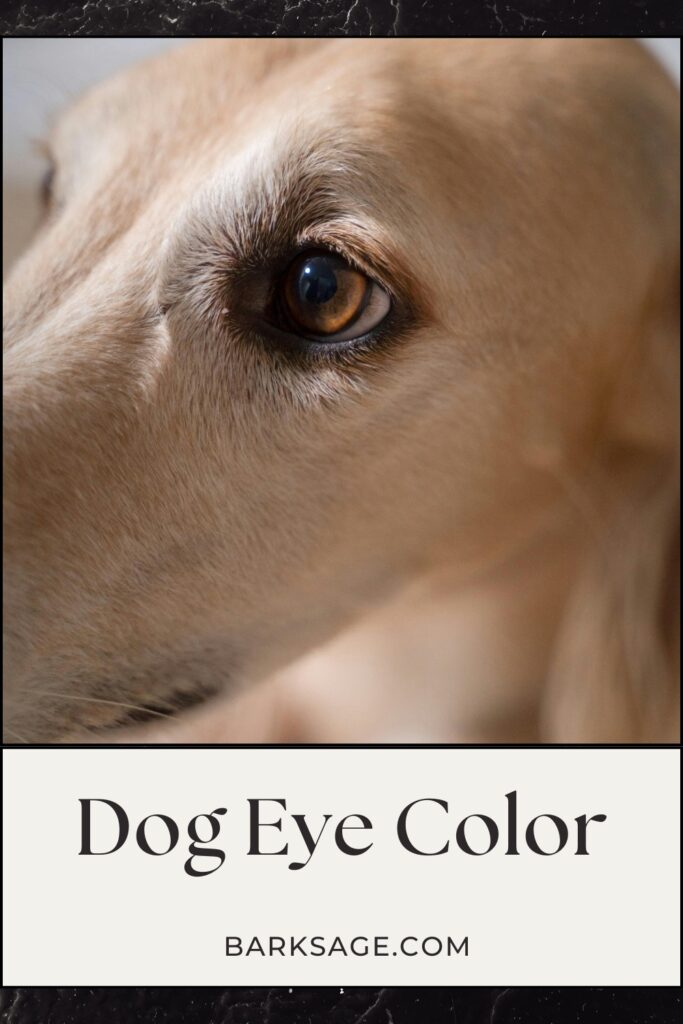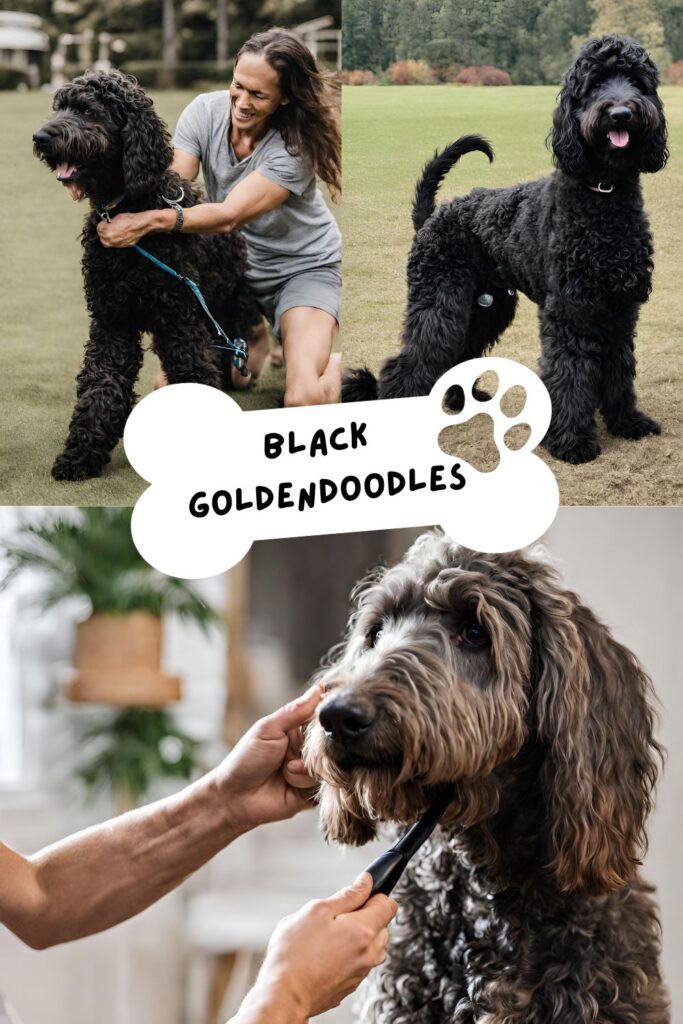Dog Eye Color, Dogs have many eye colors, from the common brown to unique colors like hazel, amber, and blue. This variety comes from how pigment, fibers, blood vessels, and nerves in the iris work together. Many genes and factors affect eye color, but eumelanin’s type and distribution mainly decide it1.
If a dog has more black pigment, their eyes are usually brown. Lighter pigments can mean eyes are yellow or green1. Sometimes, the eye color is not due to pigment but to how light scatters, creating blue and green eyes. This makes the range of dog eye colors truly remarkable and beautiful.
Key Takeaways
- Dogs can have a variety of eye colors, including brown, hazel, amber, yellow, blue, and green.
- Eye color is primarily determined by the type and distribution of the eumelanin pigment in the iris.
- Dogs with more black pigment tend to have brown eyes, while those with lighter pigments often have pale yellowish or greenish eyes.
- Structural color caused by light scattering can also create blue or green eyes in some dogs.
- The diversity of dog eye colors is a fascinating aspect of their biology.
What Determines a Dog’s Eye Color?
Dogs have captivating eye colors due to pigments produced and their distribution within the iris. This knowledge helps us understand the wide range of eye colors dogs have.
Pigment Type and Color
Just like us, dogs make eumelanin (black or brown) and pheomelanin. The colors and amounts of these pigments shape a dog’s eye color2. Dark eumelanin often means dark brown eyes. Lighter brown eumelanin can lead to amber or light brown eyes. The way these pigments spread in the iris affects color intensity too.
Pigment Distribution
How these pigments spread in the iris affects eye color3. More melanin makes eyes darker, while less melanin makes them lighter. Uneven pigmentation can result in special eye color patterns, like in heterochromia.
As puppies grow, their eyes might change from blue or gray to a different color. This happens as their pigment spread gets more defined3.
4 A study found that people think darker-eyed dogs are friendlier but less mature than lighter-eyed dogs. So, eye color might influence how we see a dog’s personality.
Certain genes, like the ones for blue eyes or albinism, can also impact eye color. But such cases are uncommon, affecting only a small percentage of dogs2. Some gene variations in dogs, like merle, can lead to health problems in some puppies2.
The mix of pigment types and distribution makes dog eye colors unique. Knowing these details lets us understand and enjoy the variety of colors dogs display243.
Dog Eye Color: Exploring the Spectrum
Dogs have a wide range of eye colors beyond the usual brown, amber, and hazel. Though these are common, rare and unique colors catch our eyes5.
Common Eye Colors
The usual dog eye shades rely on eumelanin pigment types and how they’re spread5. This makes browns, ambers, and hazels the top choices for most dogs5.
Rare and Unique Eye Colors
Dogs also sport eye colors that are less common but very striking. Think of blue and green eyes. They’re rare and you see them more in certain breeds like Siberian Huskies and Australian Shepherds5. Abnormalities in genes, like albinism and specific coat patterns, can also cause unusual eye shades5.
The variety in dog eye colors shows off their diverse genetic pool. This includes the usual browns and ambers, to the more unusual blues and greens. It all reveals the amazing spectrum of their vision6.
Dogs might not see color as well as us, but it’s still key to their daily lives. It affects how they play with toys, see their world, and even how they show emotions6. Knowing this can help us meet our dogs’ needs better and bring us closer together6.
| Dog Breed | Typical Eye Color | Rare Eye Color |
|---|---|---|
| Siberian Husky | Blue | Heterochromia (two different colored eyes) |
| Australian Shepherd | Brown, Hazel | Blue, Green |
| Pug | Brown | Blue |
| Border Collie | Brown, Amber | Blue |
| Dalmatian | Brown | Blue, Green |
From common to rare, dog eye color diversity is fascinating. It teaches us about our dogs’ biology and shows the beauty of their eyes7. Understanding the reasons behind these colors enriches our experience with our pets7.
“Dogs’ color vision, though not as extensive as humans’, contributes to their hunting abilities by assisting in tracking scents and identifying movement.”6
Exploring dog eye colors reveals amazing adaptations and evolution. This highlights the uniqueness of our canine companions756.
What eye colors can a dog have?
Common dog eye colors
rare dog eye colors
dog eye colors and health issues
puppy dog eye colors
why do some dogs have different eye colors
all dog eye color types
dog eye color chart
Conclusion
Dog eye color tells us a lot about a dog. It shows us their health, personality, and where they come from8. Knowing how a dog’s eye color forms, including the types of pigment and how it’s spread, lets us see the beauty in their eyes9. For example, a Labrador Retriever’s deep brown eyes or a Siberian Husky’s bright blue eyes show their special traits and history.
Understanding dog eye color is important for us. It helps both owners and fans of dogs see more than just color. By looking at all the eye colors possible, from common to very rare, we understand how nature and their environment make each dog unique10.
In the end, a dog’s eye color is about more than just looks. It tells a story of how dogs have adapted over time in a beautiful way8910. Appreciating a dog’s eyes lets us connect with them on a deeper level.
FAQ
What factors determine a dog’s eye color?
A dog’s eye color reflects on the kind and amount of eumelanin in its iris. The amount of pigment and how it’s spread plus the light scattering effect matter. They help decide the final eye color of the dog.
What are the most common dog eye colors?
Common dog eye colors include brown, amber, and hazel. These colors come from the eumelanin pigment found in the iris of most dogs.
Can dogs have rare or unique eye colors?
Yes, dogs can have unique eye colors like yellow, green, and blue. Even having two different colored eyes is not so rare. These colors are seen in certain breeds such as Siberian Huskies and Australian Shepherds. They might have them due to albinism, merle patterns, or other genetic reasons.
How can a dog’s eye color provide insights about their health, personality, and ancestry?
A dog’s eye color hints at its health, personality, and where it comes from. Usually, darker eyes mean a stronger personality, while lighter eyes might show a more sensitive side. The color of eyes can also hint at a dog’s breed.
What is the role of pigment in determining dog eye color?
The pigment in a dog’s eyes is mainly black or brown, made of eumelanin. Black leads to deep brown eyes, while brown causes amber or light eyes. The amount of pigment matters too. More pigment means darker eyes, and less means lighter colors.
Source Links
- https://coatsandcolors.com/dog-eye-colors/ – Dog Eye Colors | Coats and Colors
- https://www.wisdompanel.com/en-us/blog/blue-eyes-in-dogs – Why do some dogs have blue eyes? (5 causes + most common breeds)
- https://www.physicsforums.com/threads/do-dogs-have-different-eye-colors.67978/ – Do Dogs Have Different Eye Colors?
- https://www.smithsonianmag.com/smart-news/heres-why-most-dogs-have-brown-eyes-180983496/ – Here’s Why Most Dogs Have Brown Eyes
- https://dogsnob.co/blogs/news/can-dogs-see-colors-understanding-dog-vision – Can Dogs See Colors? Exploring a Dog’s Color Vision
- https://basepaws.com/dog-insider/what-colors-can-dogs-see – Exploring the Color Perception of Canines: What Colors Can Dogs See?
- https://snouters.com/through-the-dogs-eyes/ – Understanding Dog Color Vision: See The World Through Their Eyes
- https://www.akc.org/expert-advice/health/can-dogs-see-color/ – No title found
- https://www.dogster.com/dog-health-care/when-do-puppies-eyes-change-color – When Do Puppies’ Eyes Change Color? Average Age & Determining Factors – Dogster
- https://www.newsweek.com/humans-prefer-dogs-darker-eye-color-1853708 – Humans prefer dogs with certain eye color, scientists reveal



